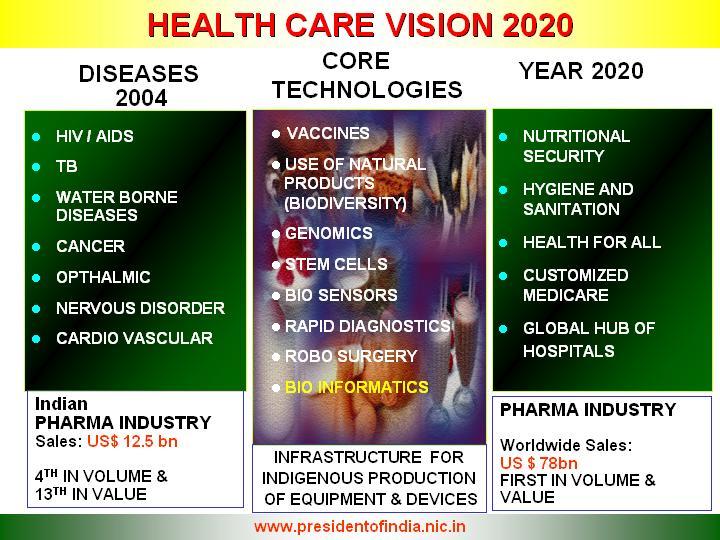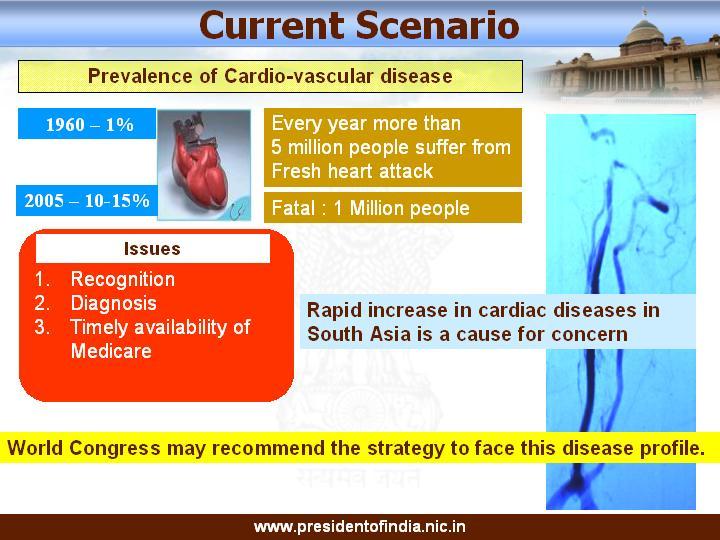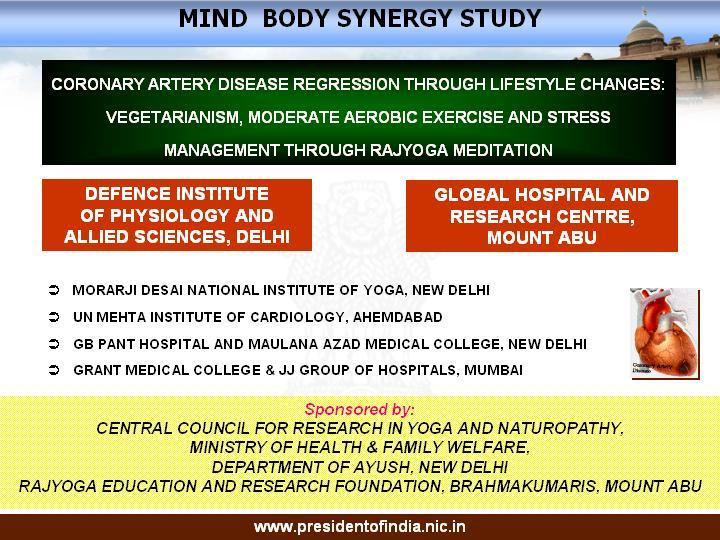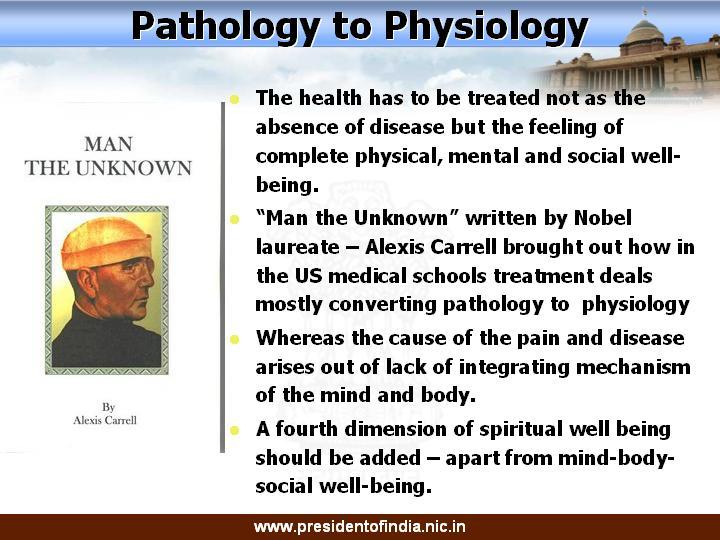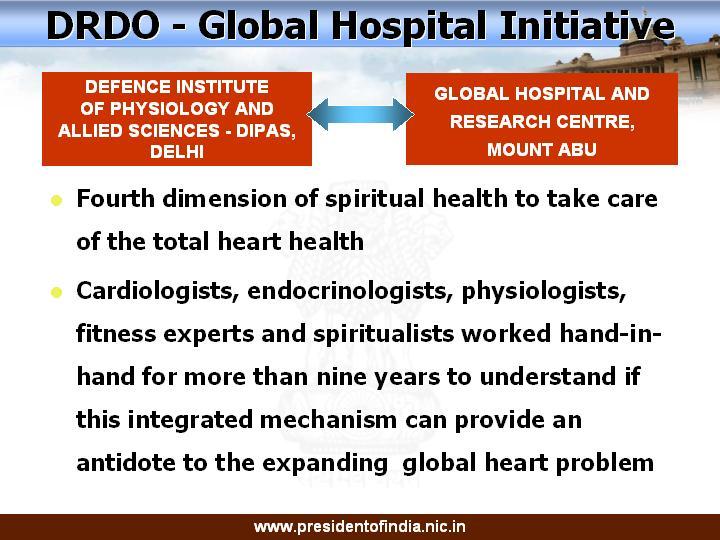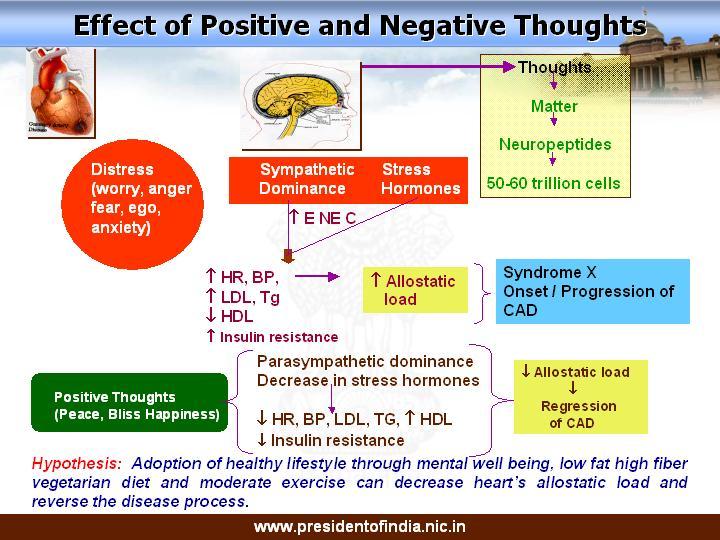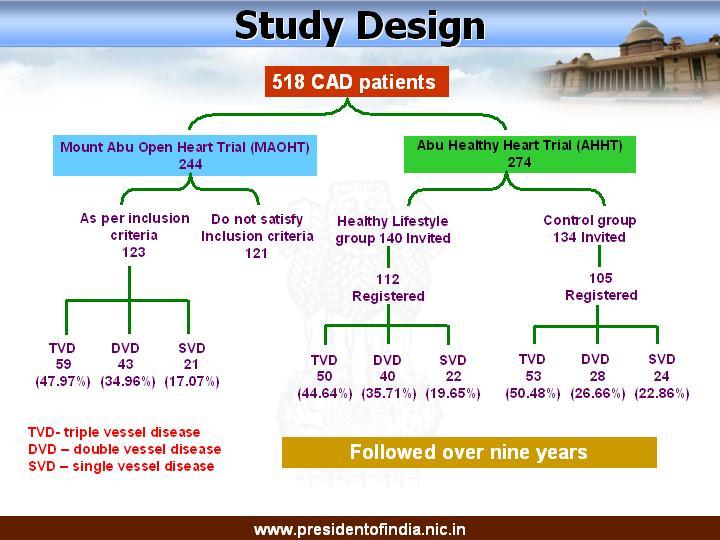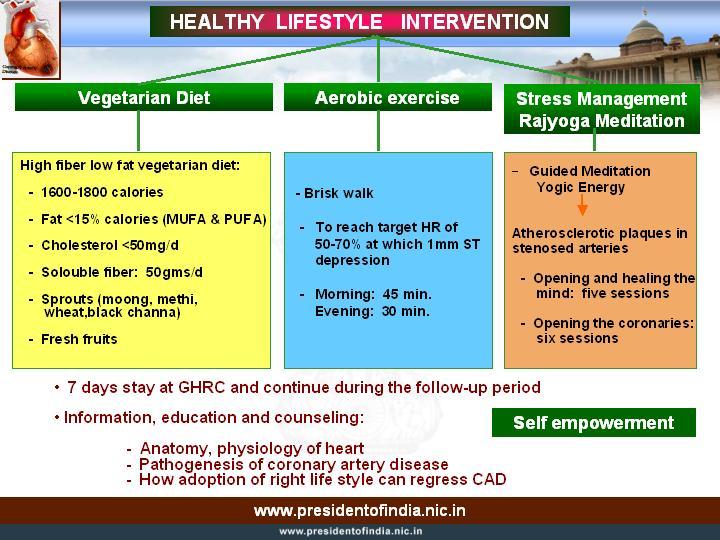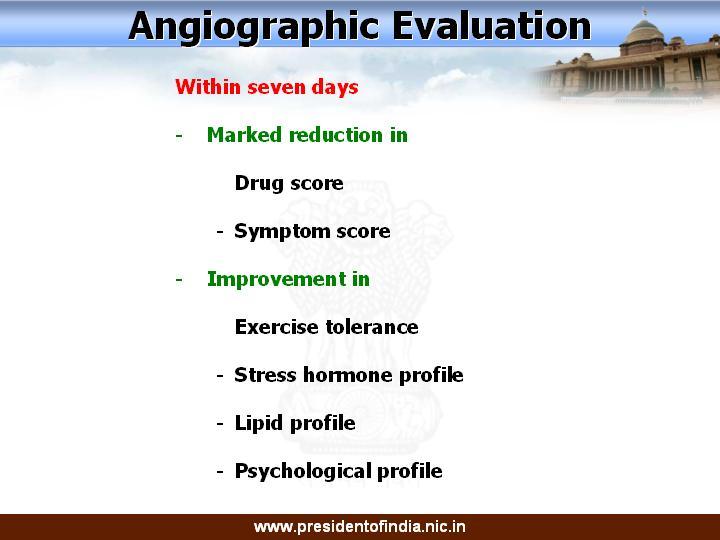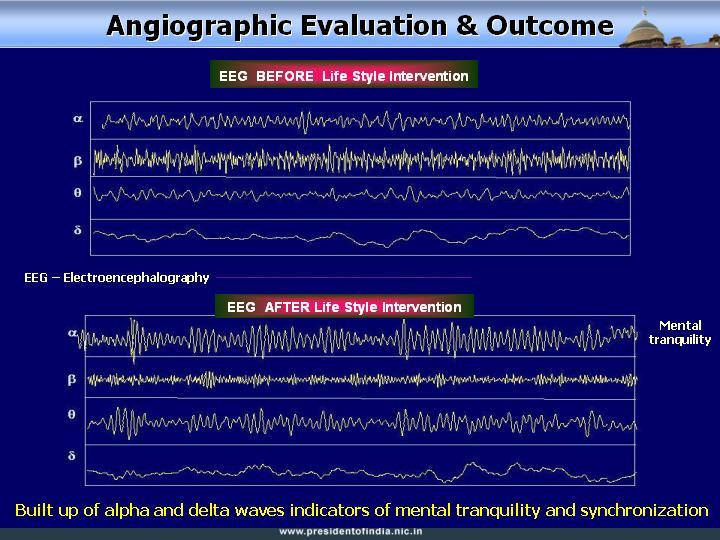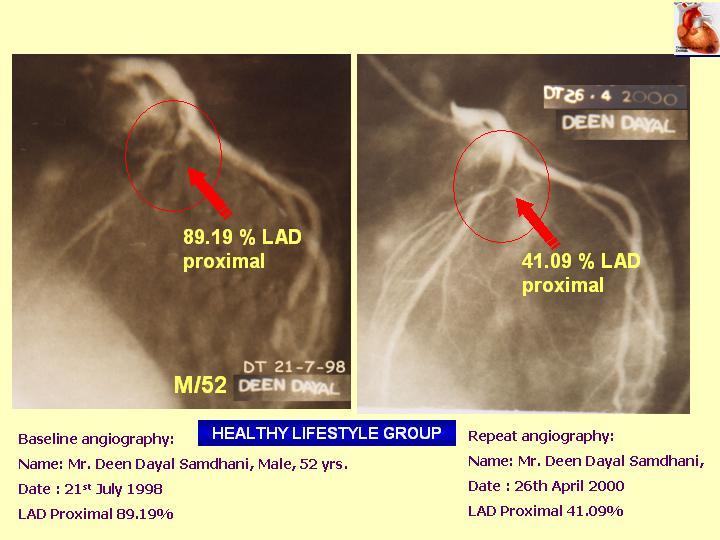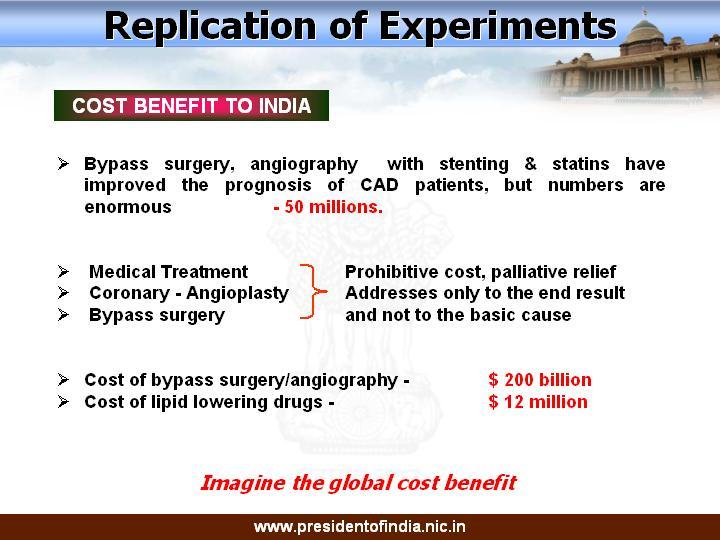Address at the World Congress on Clinical and Preventive Cardiology(Video Conference From Madurai to Abu Road, Rajasthan)
(Video Conference from Madurai to Abu Road, Rajasthan) : 22-09-2006
Integrated three dimensional approach for healthcare
I am delighted to participate in the inauguration of the World Congress on Clinical and Preventive Cardiology taking place at Shantivan, Abu Road. I am very happy to meet and discuss issues with the experts in the fields of clinical, preventive and experimental cardiology who have gathered here and to share their experiences. I am extremely happy that cardiologists from the U.S., U.K., the Netherlands, Malaysia and many other countries have also gathered to deliberate on recent advances in cardiac care.
Current Scenario
Cardiovascular diseases leading to a variety of heart related problems have assumed epidemic proportions the world over and have become the most common cause of fatality in the developed as well as developing nations. In India, I understand the prevalence of cardiovascular diseases has increased from 1 % in 1960 to 10 % to 15 % of the adult population now. Every year, more than five million people suffer from fresh heart attacks including nearly 1.5 million fatal attacks. One of the critical issues is the recognition, diagnosis and timely availability of Medicare at the time of attack including rural areas. The rapid increase in the rate of coronary artery diseases in South Asia particularly in India, Pakistan, Bangladesh, Nepal and Sri Lanka is definitely a cause of concern for health specialists of this region. The increase in incidence of diabetics among our population aggravates the heart problem further. Hence, the World Congress will result in certain useful recommendations for the medical community and social organizations like the Bhramakumaris and the institutions like DIPAS, DRDO and many more institutions.
Effect of Globalization
Rapid changes in lifestyle associated with globalization, industrialization and urbanization of this region is probably the greatest cause for the increase in the rate of cardiovascular diseases. Alterations in traditional life style due to migration from rural to urban areas in India or migration abroad to more prosperous conditions may also be responsible for increasing coronary artery diseases. This leads us to think that a problem which has been self-created by adopting a faulty life style during the transition of the country from developing into a developed nation, may find a solution through reversing this process by appropriate modification of the life styles of individuals and families. Specialists may say that genetically Indians wherever they are, have a greater tendency to be affected by cardiovascular diseases. However, the adopted aberrant lifestyle provides an environment for expression of the genes, which can be easily avoided by choosing a very healthy life style, which is in control of every individual. The cost of the cardiac treatment and recurrence even after treatment after a certain period and increasing trend of the cardiac cases has led to groups to work on the preventive methodology. Of course, this is what this congress will be in the process of discussing. I would like to share a few thoughts in the area of mind-body integrated treatment.
Mind-Body-Synergy Studies
Studies on optimization of mind-body-synergy had commenced in the Defense Research and Development Organization in 1993 by integrating two laboratories namely the Defense Institute of Physiology and Allied Sciences and the Defense Institute of Psychological Research. This enabled creation of mind-body-synergy in understanding problems faced by humanity. Studies were started in three areas namely cancer, HIV/AIDS and coronary artery disease. The aim of the studies was to validate the hypothesis that mind-body-synergy could provide a solution to global health problems. Health has to be treated not as the absence of disease but the feeling of complete physical, mental and social well-being. Generally, the conventional health care system pays attention to physiology. I have come across a beautiful book ? 3 decades ago titled ?Man the Unknown? written by the Nobel laureate ? Alexis Carroll. He brought out for the first time how in American medical schools, treatment deals with mostly converting pathology to physiology. Whereas, the cause of pain and the disease arises out of lack of an integrating mechanism in the mind and the body. This has led to a major change in thinking about the causes of disease and has resulted in a considerable amount of change in the medical syllabi in different parts of the world. Apart from mind-body-social synergy to attain good health, we need to add the fourth dimension, that of spiritual health.
DRDO - Global Hospital Initiative
Keeping this in mind the DRDO took the initiative of formulating a project in collaboration with the Global Hospital and Research Centre, Mount Abu an institution of the Brahma Kumaris. They added the fourth dimension of spiritual health to take care of total heart health. In addition, this project involved a partnership from many hospitals and research institutions spread in different parts of the country, wherein cardiologists, endocrinologists, physiologists, fitness experts and spiritualists worked hand-in-hand for more than eight years to understand if this integrated mechanism can provide an antidote to the expanding global heart problem.
Effect of Positive and Negative Thoughts
Friends, we know well that thoughts whether positive or negative are not just vibrations in the air but well-defined electro-chemical events with physiological consequences. Thoughts, in the brain are converted into matter, which I understand reach all fifty ? sixty trillion cells of the body in the form of neuro-peptides. If thoughts are distressing, full of worry, anger, ego or anxiety, the brain starts pouring stress hormones, which in turn increases the load on the heart and can set in coronary artery disease. If, we can reverse this process by creating an environment of positive thoughts, peace and happiness, this can minimize the load on the heart, which should lead to reversal of the disease. The main hypothesis was by adapting a healthy lifestyle of low fat high fibre vegetarian diet, moderate exercise and stress management through Rajyoga meditation, we can decrease load on the heart which in turn should reverse or halt the disease process. Similarly there are many types of meditation, which may suit certain groups of people. It has been recognized that keeping mind and body busy through good work is another way of Yoga.
Study Design
This hypothesis was tested in more than five hundred and eighteen patients, who had angiographically proven coronary artery disease. Two trials were carried out, Mount Abu Open Heart Trial in which patients served as their own controls and Abu Healthy Heart Trial in which hundred and twelve patients received a healthy life style, whereas hundred and five patients served as control and did not receive the healthy life style intervention. In fact, the control group was also prescribed the same diet and exercise but was not given instructions on meditation. Most of these patients had advanced coronary artery disease involving all three heart arteries. These patients were tracked over a period of eight years by the Global Hospital and DIPAS.
Life Style Intervention
The life style given to these patients was very simple and rudimentary. In fact, they received a traditional Indian diet having lots of fibre, fruits and sprouts which I understand was a staple diet of every Indian family about five decades ago. The exercise given was simple; a brisk walk both in the morning and evening hours. The major component of the intervention was stress management through meditation. The main efforts were to empower patients with information and education on heart disease and how they themselves can control or reverse it.
Angiographic Evaluation
I understand that angiographies were coded and analyzed by a panel of independent angiographers. The outcome appears to be quite rewarding. Like any medical treatment a visibly marked improvement in cardiac health of these patients could be seen within seven days of the commencement of the intervention. Their requirement of drugs prescribed by their cardiologists decreased markedly. The symptoms of chest pain and uneasiness reduced. Their capacity to exercise improved dramatically. I understand that after six months of intervention some of the patients were even able to take to swimming. The so-called bad cholesterol, stress hormones profile improved noticeably. The psychological or mental health showed considerable improvement.
The heartbeat became very rhythmic and natural. The brain waves especially the Alpha that I understand are an indicator of mental tranquility increased dramatically. In fact, the increased Alpha waves could be recorded both during eye closed and eye open conditions suggesting that while they were doing their routine work mental tranquility was well maintained.
When their angiographies were repeated the control group showed an increase in artery blockage whereas the group, which received life style intervention, showed a substantial decrease in artery blockage. Thus, this experiment clearly gives us ample evidence to confirm our hypothesis about the efficacy of lifestyle intervention in promoting sustainable healthy hearts.
Replication of Experiments
However, I would suggest that the specialists gathered at this Congress should extend this experiment to their establishments in their countries so that what benefit a limited number of people have got today can be shared by the entire universe. This will definitely lead to savings in billions of dollars of expenditure as a large number of diseases are now well recognized to be due to faulty lifestyles. Also, the savings added to the well being of the people can result in faster development due to enhanced availability of healthy human resource and additional funds.
Conclusion
While concluding, I would like to congratulate both the technical and scientific teams of Physiology and Psychology, I have seven suggestions for the members assembled in the World Congress of Clinical and Preventive Cardiology.
a. A new website has to be launched on the occasion of this Conference, putting the theme papers as source material.
b. In this large gathering, there may be number of experts who are working in the three dimensional healthcare approach. Each one can write a page about their experience and physio-psycho meditation treatments.
C. Similarly, patients who found great relief by the three dimensional health approaches can also record their experiences in any language, which can be facilitated by the organisers. It can be available on the website. There also may be a suggestion that any one who has experience in the field can also respond.
d. A quarterly journal on three-dimensional health care may be published; jointly by the Brahmakumari organisation and DRDO about the progress made in technology and management of cardiac are through Life Style Intervention. Worldwide contributions may be requested.
e. The results and the recommendations of this conference on three-dimensional healthcare can be communicated to the Indian Medical Council for action.
f. What is reported in the conference is the integrated 3D dimensional approach to healthcare through experimental data. Research is essential on how an integrated treatment involving high fibrous vegetarian diet, meditation and aerobics works on the human system and removes blockages in the artery and provides relief from the pain.
g. Of course this World Congress may also give a recommendation based on the experimental results and the discussions. Can it be extended for other type diseases like HIV, Cancer etc.?
I inaugurate the World Congress on Clinical and Preventive Cardiology. I greet all of you on the eve of World Heart Day, which you will be celebrating day after tomorrow. On this occasion let me wish you success in your mission of removing the pain of the people by adapting the preventive strategy and giving a simple solution of healthy life style to the ailing humanity.
May God bless you.
1. Your Excellency, What exactly is three dimensional approach? Can you just elaborate?
- From Dr. H. K. Chopra, Organising Chairman, WCCPC 2006
Ans: 1st dimension: Healthy food style, high fibrous food
2nd dimension: Aerobic exercises
3rd dimension: Meditation
These I meant by three dimensional approach.
2. India has got a very rich heritage in spiritualism. The 4th dimension as you mentioned is spiritual health. We can very well export spiritual health to the globe. Thank you.
- From the audience of Doctors
Ans: Regarding the export, making a business you can do afterwards. But what you do now make the India?s health is good health using this three dimensional or four dimensional approach. OK.
3. What we can do to bring awareness?s among the masses so that more people who don?t know much about cardiology, what we can do best so that they know and bring about awareness in more peoples heart so that we can do much to prevent heart diseases in the society?
- From audience of Doctors
Ans: Well it is a good question. I would like to tell you how you can do this. Are you a doctor? Now I would like to address all the doctors. When a patient comes to a doctor, he considers and accepts doctor as Godly person. He accepts that. Now imagine, when you treat that person, when you are treating a person, he get number of people from his family and friends to see the patient. As a doctor you spread the information, you tell his friends, you tell his relatives, how your relative got a heart problem because of the following reasons. So I will suggest these are the schedule of three dimensional schedules he should follow. If you spread this information, that will be the best teaching. You will become a teacher, not only a doctor, you should be a teacher also. They will believe you because you are treating the man or women. You agree? Yes or no?
Comments: Thank you very much His Excellency, for this excellent lecture. I thought you are a Cardiologist by profession, the way you spoke. From Dr. Abdul Wase, USA, International Faculty, WCCPC 2006
Comments by His Excellency: In my last birth I was a Cardiologist.
4 This is just a comment, then I will ask the question. There was one presentation today morning where they have collected data from rural India Andhra Pradesh over one lac people, and they found the death from cardiovascular disease was 25%. I was shocked see this number. Actually when I was coming to the conference, I was doing some research, I was trying to get some figures, unfortunately there is nothing available on internet in term of prevalence of cardiovascular diseases specifically cardiac arrest and certain cardiac death. So my question to you, Your Excellency is, may be we should have a some kind of huge database, that we should collect all the data from the different parts of the country, and try to establish the problem, how big the problem is and collect different variables and then follow those patient population over a long period of time, as they have done in Framingham?s study and other parts of the United States.
- From the Audience of Doctors
Ans: I appreciate your question. In the beginning as soon as I started presenting the material, I felt the increase in the heart problem since 1960, today it is further increasing. I agree that database is to be generated, and I will see to that every state in my Country, they put some clinical data, clinical incidences in the internet about Indian Hearts some thing like that, I will going to recommend and suggest so that we know the material which create problem. As an export you can understand genetically Indians are susceptible for cardiac diseases that is well known. But the question is, what we are discussing, you know, once heart problem is detected how to handle and how to prevent. So the preventive cardiology treatment is most vital. This is the message that the world congress should spread.
Comments by Dr. S. K. Parasar, President of Cardiological Society of India about the previous figure:
The ICMR (Indian Council for Medical Research) has taken a big project and I happened to be a member of that project and the first meeting is on 15th October 2006, in which they have setup of a big website and they will studying on acute cardiovascular accidents through out the country and then collect the whole data and that is starting from 15th October.
Comments by His Excellency: But my suggestion you start tomorrow the whole the information for various countries so that the database will be available for you.
5. I am saying just like for body we have got all the branches all over the world in all the Medical Institutes. Now this is a Preventive Cardiology Congress, why not we have a chair on this three dimensional approach, at least that start from India, so that this thing can be spread.
- From G. K. Jain, Participant of CAD Program (Dilwala)
Ans: Yes, I will take your suggestion. The best way to do that, I told you an international website you must start, and you are empowered to do in this congress, Dr. Selvamurty will do every aspects of necessary requirements.

